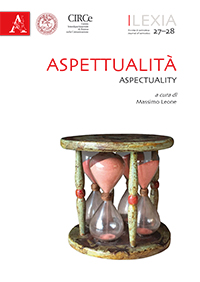Estratto da
LEXIA. RIVISTA DI SEMIOTICA
Aspettualità / Aspectuality
Imperfectividad y final del relato
LEXIA. RIVISTA DI SEMIOTICA
Aspettualità / Aspectuality
Imperfectividad y final del relato

Traditional accounts of stories have established that they mustpossess a beginning, a middle and an end, and that the ending happenswhen the last of the events is completed. But number of examples inliterature, an also in historiography, show that stories are not alwayscomposed of a finite set of events. This is especially noticeable in historiography in the case of annals and some chronicles, where events are reported chronologically with a very loose relation between events. The lack of strong dependence between the parts has even led some to deny imperfective narratives the full status of a story. Hayden White, furthermore, a prominent philosopher of history, demands that a properhistory must not only have a closed set of events but also that it mustbe subject to an emplotment under the form of an aesthetic structureof events, other than chronology and causality, which leads to a moralfinalization of the story or, in other words, that the account of “whathappened” must lead to the question of “what is the point”. Againstthese restrictions, it can be argued that even imperfective narratives canlead to a morality of the story and that an open sequence of events canalso be finalized. This paper will support the idea that finalization of openstories take place when they are put into practice, that is, when theirimmanent structures are used to integrate new and broader semioticalobjects beyond signs and texts. Examples of perfective and imperfectivenarratives and the usefulness of history will be provided by Spanish andindigenous chronicles of the 16th–century “Indies”.
| pagine: | 107-131 |
| DOI: | 10.4399/97888255087655 |
| data pubblicazione: | Giugno 2017 |
| editore: | Aracne |








